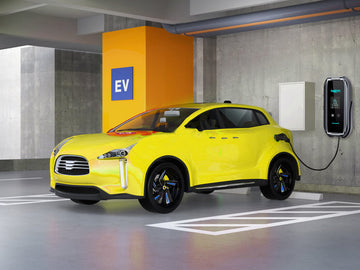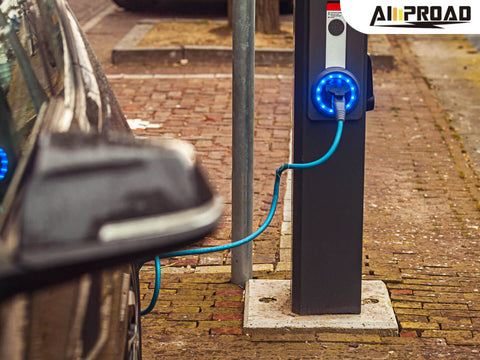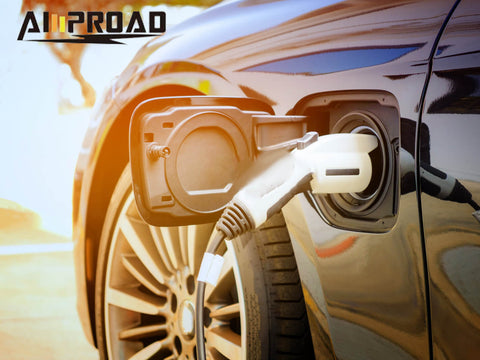
Curious about the electricity needed to charge your Tesla? Understanding the factors that influence charging costs can provide clarity on energy consumption and help with budgeting for daily use. Variables such as battery capacity, charging speed, electricity rates, and charging location all play a role in determining overall energy usage. Whether charging at home or using public stations, being aware of these elements ensures better efficiency and cost management. As electric vehicles continue to shape the future of transportation, staying informed about charging requirements can make ownership more convenient and cost-effective.
Tesla Charging Process
If you're wondering how to charge a Tesla efficiently, the process is designed for convenience and ease. To initiate the charging process, locate the charge port on the left side of your Model 3, behind a door integrated into the rear tail light assembly. You can open the charge port door using the Tesla charge cable button, touchscreen controls, key fob, or voice commands.
Once the charge port door is open, you have the option to change charge settings through the touchscreen, adjusting parameters like charge limit and current. If you're at a public charging station and need to charge tesla 110v, plug the appropriate adapter into your vehicle's charging port and connect it to the station's charging connector. For those using the Mobile Connector, plug into the power outlet before connecting to Model 3.
Align the connector with the charge port and insert it fully. Model 3 engages a latch to secure the connector, shifts into Park, and adjusts the Battery's temperature if necessary. If you're not actively charging but plugged in, Model 3 draws power from the charging equipment rather than the Battery.
Throughout the charging process, the charge port light indicates the status. White or light blue signifies readiness, blue means the charger is connected but not actively charging, and blinking blue indicates preparation for charging. Blinking green signifies the charging is in progress, solid green means charging is complete, and blinking amber indicates charging at a reduced current.
The touchscreen provides real-time charging status, including time remaining, current power, charging rate, range gained, and total driving distance. If your Model 3 is locked, the charge port light won't illuminate, ensuring security.
Charging status messages like Supercharging or Scheduled Charging are displayed during the process. To stop charging, either disconnect the charge cable or use the touchscreen controls.

Tesla recommends leaving Model 3 plugged in when not in use to maintain the Battery at an optimal charge level. Charge settings, accessible through the touchscreen, allow you to customize various parameters, including charge limit, charge current, and scheduled charging.
During supercharging, additional information about usage fees, location, and cost estimate is displayed on the touchscreen. Idle fees, designed to encourage timely departure from Supercharger locations, apply when half or more of the Superchargers are occupied.
Tesla Charging Best Practices include avoiding excessively low Battery levels, adhering to recommended daily and trip charging limits, and using caution when manually releasing the charge cable.
Types of EV Charging
When considering home EV charging options, it's essential to explore versatile solutions that cater to various needs. The Amproad wide voltage and amp Level 2 EV charger stand out as an excellent choice due to its adaptability. Not only does it function as a Level 2 charger, offering faster charging speeds with a 240-volt circuit, but it also provides the flexibility to be used as a Level 1 EV charger.
Level 1 Charging:
Description: Level 1 charging is the most basic form of home charging and involves plugging your EV into a standard household electrical outlet.
Charging Speed: It typically operates on a 120-volt circuit.
Suitability: Level 1 charger is suitable for plug-in hybrid vehicles and EVs with smaller battery capacities.
Tesla Mobile Connector Adapter: If you have a Tesla, you can use the Mobile Connector provided with your vehicle for Level 1 charging using a standard household outlet.
Level 2 Charging:
Description: Level 2 chargers require a 240-volt circuit, providing faster charging compared to Level 1.
Charging Speed: It delivers power at a higher rate, making it suitable for both plug-in hybrids and all-electric vehicles.
Home EV Charger: To make the most of Level 2 charging, consider installing a dedicated home EV charger. These chargers, also known as EVSE (Electric Vehicle Supply Equipment), are designed for home use and can be easily installed by an electrician.
Charger House: Some Level 2 chargers are built into charging stations that can be installed at your residence, often referred to as "charger house."
Charging Station Options: There are various Level 2 charging stations available, and the best Level 2 EV charger for your needs depends on factors like charging speed, connectivity, flexibility like the portable EVSE, and additional features.
Level 3 Charging (DC Fast Charging):
Description: Level 3 chargers, also known as DC Fast Chargers, provide rapid charging, making them suitable for longer journeys and quick top-ups.
Charging Speed: These chargers operate on a higher voltage and current, delivering a significantly faster charging experience.
Availability: While Level 3 charging is common at public EV charging stations, it is not typically installed for home use due to its high power requirements.
Understanding these charging options, along with how to charge a Tesla or any other EV at home, empowers EV owners to optimize their charging experience based on their vehicle's specifications and individual preferences.
|
EV Charging Levels Chart |
|||
|
Charging Level |
Charging Speed |
Suitability |
Tesla Mobile charger |
|
Level 1 EV Charging |
120V |
Plug-in hybrids, smaller EVs |
Tesla mobile charger |
|
Level 2 EV Charging |
240V |
Plug-in hybrids, all electric EVs |
Home EV Charger |
|
Level 3 EV Charging (DC fast Charging) |
Rapid |
Suitable for long journeys and quick top-ups |
Not for home use due to high power |
This chart provides a concise overview of the key characteristics of each charging level, including charging speed, suitability for different vehicles, and specific features such as the Tesla Mobile Connector for Level 1 and the Home EV Charger and Charger Houses for Level 2 charger.
Electricity Consumption
Electricity consumption for electric vehicles is influenced by several factors that vary across different models and charging scenarios. Understanding these factors is crucial for estimating the energy required for a full charge.
Factors Influencing Electricity Consumption:
Battery Capacity:
One of the primary factors affecting electricity consumption is the battery capacity of the electric vehicle (EV). Battery capacity is measured in kilowatt-hours (kWh) and represents the amount of energy the battery can store. Generally, vehicles with larger battery capacities can travel more miles on a single charge but also require more electricity for a full recharge.
Charging Speed:
The charging speed, or the rate at which an EV charges, significantly impacts electricity consumption. Different charging levels contribute to varying speeds. Level 1 charging, typically using a standard household outlet, is the slowest, while Level 3 (DC fast charging) provides rapid charging. Faster charging speeds consume more electricity in a shorter time frame but offer the convenience of quick top-ups.
Model Variation:
EV models differ in terms of energy efficiency, affecting electricity consumption. Factors such as aerodynamics, weight, and overall design influence how efficiently an EV utilizes its stored energy. Newer models often come equipped with advanced technologies and improved efficiency, leading to lower electricity consumption per mile traveled.
Calculating Electricity Usage for a Full Charge
Estimating the electricity usage for a full charge involves a straightforward calculation based on the factors mentioned above:
Electricity Usage (kWh)=Battery Capacity (kWh)× (Charging Speed/Charge Efficiency)
Here:
Battery Capacity (kWh): The total energy storage capacity of the EV's battery.
Charge Efficiency: Represents the efficiency of the charging process, accounting for factors like heat dissipation and losses during charging.
Charging Speed: The rate at which the EV is charged, measured in kWh per hour.
For example, if an EV has a battery capacity of 60 kWh, a charge efficiency of 90%, and a charging speed of 7 kWh per hour, the electricity usage for a full charge would be:
60kWh× (0.90/7kWh/h)≈7.71hours
This formula provides a practical estimate, but real-world charging efficiency can vary. Understanding these factors empowers EV owners to make informed decisions about charging strategies, considering both time and energy consumption.
How Much Does It Cost to Charge Your Tesla?

Determining the cost of charging your Tesla involves considering various factors, and the specific details can vary based on your location, electricity rates, and the model of your Tesla. Here's a breakdown of the key elements influencing the cost:
Electricity Rates:
The cost of electricity varies depending on your location and the rates set by your utility provider. It's typically measured in cents per kilowatt-hour (kWh). You'll need to multiply the energy consumption of your Tesla by the electricity rate to calculate the cost. For example, if your Tesla Model 3 consumes 0.3 kWh per mile and your electricity rate is $0.15 per kWh, the cost per mile would be $0.045.
Charging Efficiency:
Charging efficiency accounts for losses during the charging process. Tesla Superchargers are known for their efficiency, but it's essential to consider these losses when estimating costs. Charging efficiency is usually expressed as a percentage, with higher values indicating less energy loss during charging.
Tesla Model Variation:
Different Tesla models have varying energy consumption rates, measured in miles per kilowatt-hour (MPGe). For instance, a Tesla Model S Long Range might have an efficiency of 4 MPGe, meaning it can travel approximately 4 miles on one kilowatt-hour of electricity.
Calculating Charging Costs:
To estimate the charging cost, you can use the following simplified approach:
Determine the energy consumption of your Tesla (kWh per mile).
Account for charging efficiency (expressed as a percentage).
Multiply these values by the electricity rate (per kWh).
Factors Impacting Charging Costs:
Time of Use Rates: Some utility providers offer variable rates based on the time of day, with off-peak hours having lower electricity costs.
Home Charging vs. Supercharging: Charging at home which mean there's a EVCS near me, is generally more cost-effective than using public charging stations, such as Superchargers, which may have higher per kWh rates.
Understanding these factors empowers Tesla owners to make informed decisions about when and where to charge their vehicles, optimizing both convenience and cost-effectiveness. It's important to stay informed about local electricity rates and any changes in energy pricing models that may affect charging costs.
Tips for Efficient Charging
Efficient charging of your Tesla involves strategic practices to optimize performance and reduce costs. Maximizing efficiency encompasses considerations like avoiding frequent fast charging to minimize battery wear and opting for a balanced approach with a level 2 EV charger. Embrace time-of-use strategies provided by utilities, scheduling charging during off-peak hours to benefit from lower electricity rates. Additionally, leverage Tesla's built-in tools like Scheduled Departure and Charging Profiles. Scheduled Departure ensures your car is adequately charged by a set departure time, while Charging Profiles allow customization of charging limits based on daily needs, contributing to prolonged battery life. By integrating these practices into your charging routine, you can enhance efficiency, lower costs, and promote the overall health of your Tesla's battery.


